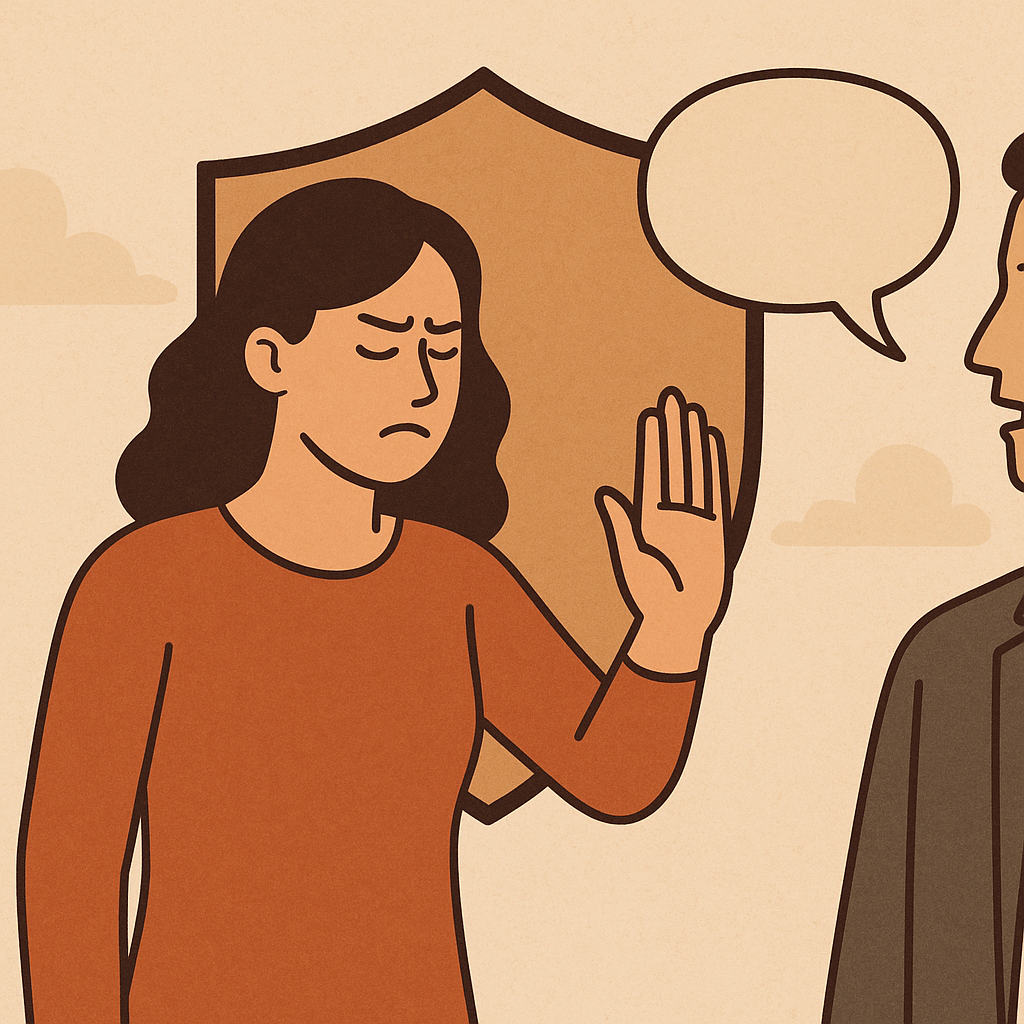Setting boundaries is one of the healthiest things you can do for your well-being. Yet somehow, it’s also one of the hardest—especially when guilt comes crashing in like an uninvited guest at your mental dinner party. So, Set boundaries without feeling guilty?
So, what’s the problem? Why do we know that we should protect our time, mental space, and energy—but then feel like the villain from a rom-com when we actually say “no” to a favor or skip that exhausting family Zoom call?
Let’s unpack that, and more importantly, let’s talk about how to set boundaries without feeling guilty—because it’s entirely possible, and people are finally starting to talk about it openly.

Why Boundaries Matter (Now More Than Ever)
In a hyperconnected, always-on world, the need for boundaries is no longer a nice-to-have—it’s a survival tactic. The rise of remote work, digital fatigue, and “productivity culture” has blurred lines between professional and personal life.
According to a study by the American Psychological Association, nearly 70% of workers feel they struggle to maintain work-life boundaries. And among Gen Z and Millennials, there’s growing pushback against toxic hustle culture and a call for clear, respectful boundaries in both work and relationships (APA, 2023).
So if you’re feeling the pressure to be “on” all the time—or you’re constantly worried about disappointing others—know that you’re not alone, and more importantly, you’re not wrong.
What Makes Setting Boundaries So Guilt-Heavy?
Guilt stems from the fear of letting people down, being seen as selfish, or breaking social norms—especially in cultures that prize collectivism, caretaking, or high achievement.
Here are some common reasons people feel guilty about setting boundaries:
- Fear of rejection or abandonment
- Desire to avoid conflict or awkwardness
- Internalized pressure to always be helpful
- Feeling responsible for others’ emotions
Recognizing these is the first step to pushing past them.
How to Set Boundaries Without Feeling Guilty: 6 Practical Steps
1. Start Small and Practice Consistency
You don’t have to start by confronting your boss or setting fire to your calendar. Begin with a minor situation where you feel stretched. For instance, if someone wants to vent but you’re emotionally drained, say:
“I really want to be present for this, but I’m low on energy right now. Can we talk later?”
Consistency builds confidence. The more often you set small boundaries, the easier the big ones become.
2. Remember: Saying No Is Not a Moral Failing
This is huge. Saying “no” doesn’t mean you’re rude, cold, or selfish—it means you’re human. Everyone has limits. As psychotherapist Nedra Glover Tawwab writes in her book Set Boundaries, Find Peace, “Guilt is a sign that you’re doing something different, not something wrong.”
Normalize the internal discomfort. It’s not proof you’ve failed; it’s proof you’re growing.
3. Use Clear, Non-Apologetic Language
Don’t cushion your boundaries with endless apologies or justifications. Instead of saying:
“I’m so sorry, I wish I could, I hate to do this…”
Try:
“Thanks for thinking of me, but I won’t be able to make it.”
“That doesn’t work for me right now.”
This isn’t being cold. It’s being clear.
4. Anticipate Pushback—But Don’t Personalize It
Yes, some people might be surprised when you start setting boundaries—especially if you’ve been the go-to “yes” person. That resistance is about their expectations, not your worth.
Prepare for reactions without trying to micromanage them. You can’t control how someone feels about your limits, and you don’t need to. That’s their responsibility.
5. Reframe the Guilt With a New Narrative
Instead of thinking:
“I’m being mean.”
Reframe it as:
“I’m teaching people how to treat me.”
Or:
“I’m choosing honesty over resentment.”
This mindset shift helps transform guilt into empowerment. You’re not harming anyone—you’re helping yourself and building healthier dynamics.
6. Lean on Supportive People and Tools
Surround yourself with those who respect your limits. And when you need a little backup, consider:
- Using digital tools like Google Calendar to block off non-negotiable rest time
- Following boundary coaches or therapists on social media (like @nedratawwab or @therapyforwomen)
- Journaling your experiences to process guilt without judgment
A study published in the Journal of Counseling Psychology even found that people who received social validation after setting boundaries experienced less guilt and more confidence (JCP, 2021).
Set Boundaries Without Feeling Guilty: Popular Trends Driving the Boundary Movement
There’s been a cultural shift toward more open conversations about mental health, burnout, and autonomy. Here are a few notable trends:
- Quiet quitting: Employees disengaging from hustle culture and setting firmer work limits
- Mental health days becoming normalized
- No-contact boundaries in toxic family dynamics are gaining acceptance
- Therapy language like “emotional labor” and “trauma responses” going mainstream
This is no longer niche self-help. It’s becoming a movement—and it’s time your boundaries got on board.
Set Boundaries Without Feeling Guilty: You Deserve Peace, Not Permission
Setting boundaries without feeling guilty isn’t about cutting people off or becoming rigid. It’s about living in alignment with your values—and giving yourself permission to take up space.
You don’t need to earn the right to rest. You don’t have to justify why you need alone time. And you definitely don’t need to feel guilty for protecting your peace.
Practice. Adjust. Repeat. You’re allowed to take care of you.
Referenced Source
1. David Tian, Ph.D. – “How To Set Boundaries Without Feeling Guilty”
https://davidtianphd.com/beyond-success/boundaries-without-feeling-guilty-18/
2. Sharon Martin, DSW, LCSW – “6 Ways to Set Boundaries Without Guilt”, Psychology Today
https://www.psychologytoday.com/us/blog/conquering-codependency/202208/6-ways-set-boundaries-without-guilt
3. Dr. Kim Blackham – “How to Set Boundaries without Feeling Guilty”
https://drkimblackham.com/how-to-set-boundaries-without-feeling-guilty/





